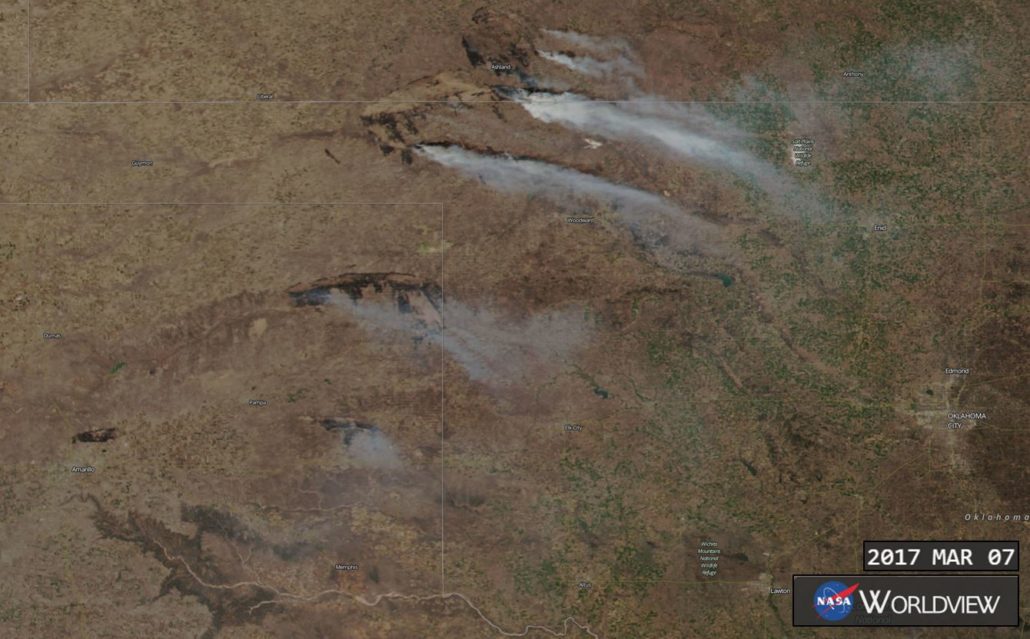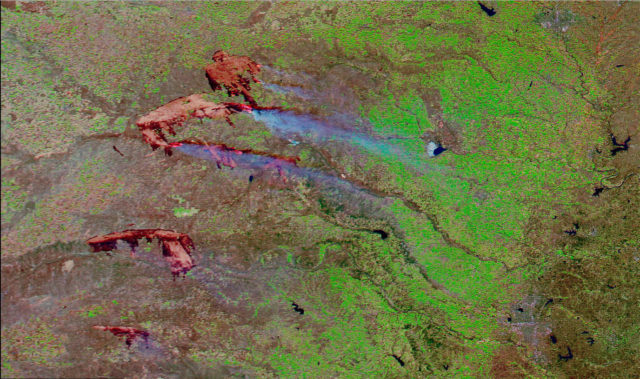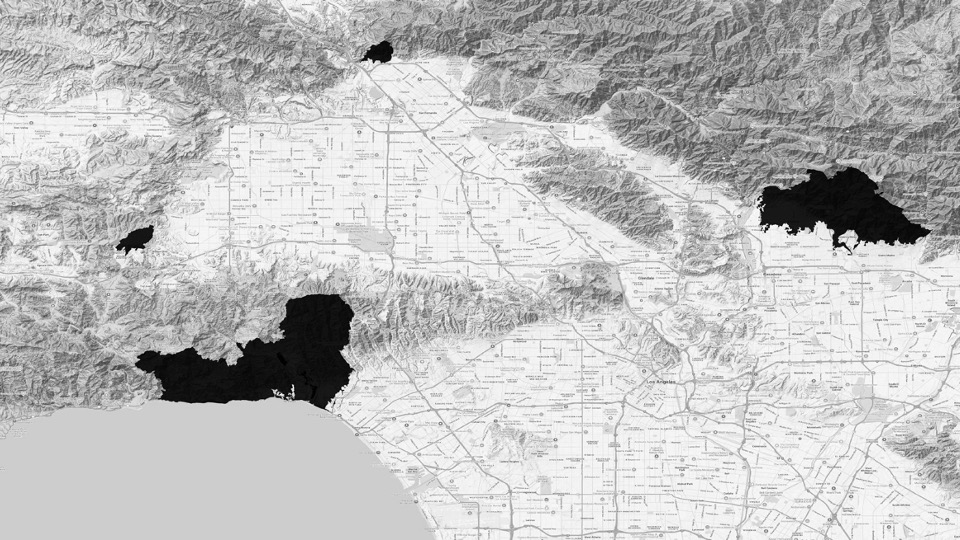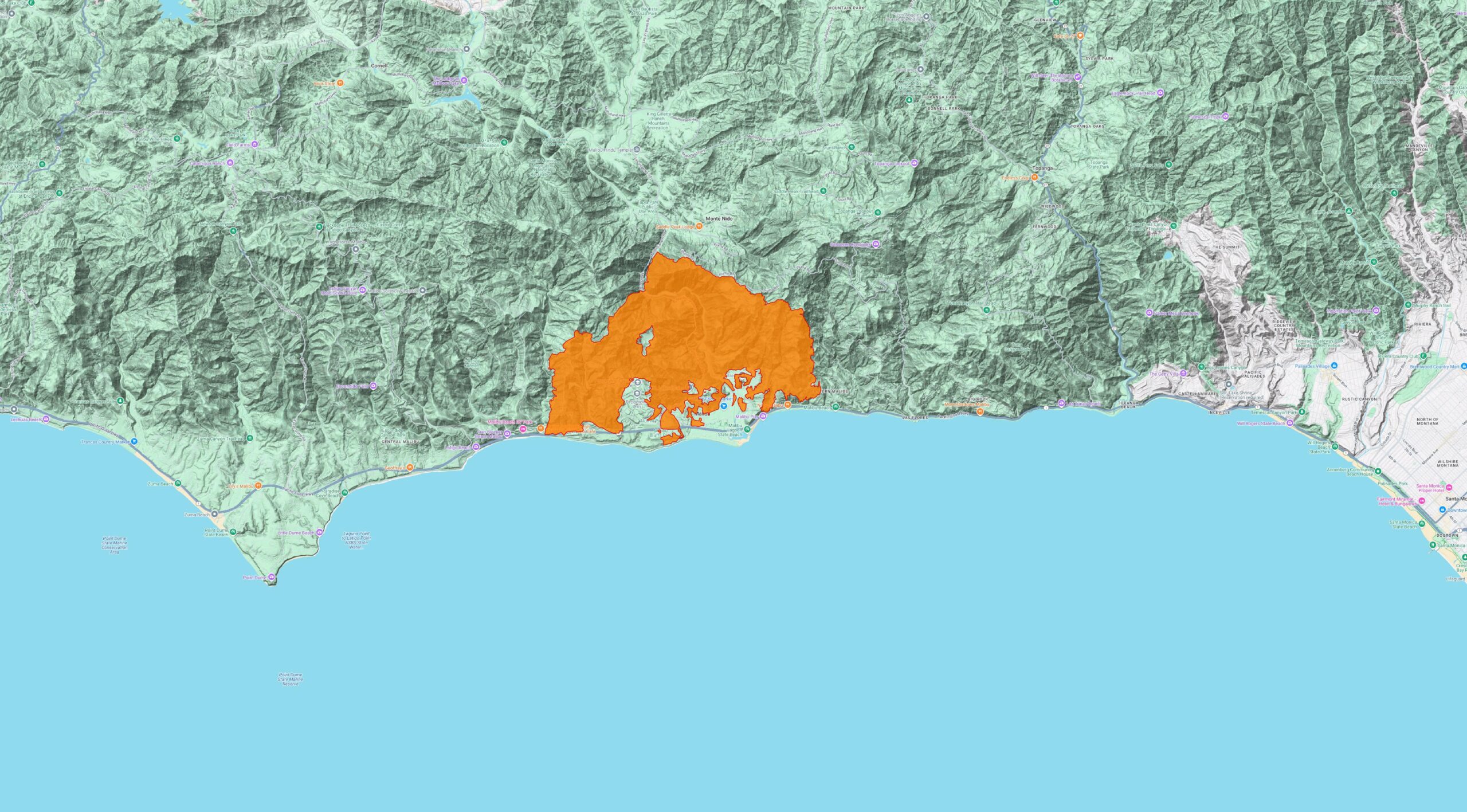Southern Plains Wildfires
This week, unprecedented fire activity swept through the southern plains. Multiple counties of Kansas, Oklahoma, and Texas saw critical fire weather conditions Sunday through Wednesday that fanned dozens of fires. Huge smoke plumes stretching for miles have been visible on NASA’s earth imagery for the area. As of March 9, seven people have died, five firefighters have been injured, thousands have been forced to flee their homes, heavy agricultural damage has been incurred, and more than a million acres have collectively burned.
The chaotic fire activity began this weekend when multiple starts forced residents from their homes in Central Kansas. The Highlands and Jupiter Hills fires in Hutchinson burned more than 6,000 acres between them. In the Texas Panhandle, three large fires broke out over the past three days, burning over 400,000 acres. The Perryton fire was the largest at 318,056 acres, rapidly spreading through grass and brush. Another Texas fire, the Lefors East Fire, ultimately claimed the lives of three of the seven reported deaths.
Roughly 60 miles to the north, three major fires burned along the Kansas and Oklahoma border, totaling another 800,000 between them. The three fires were merged into one, now called the ‘Northwest Oklahoma Complex Fire’. The fire is comprised of the Starbuck, Selman and the 283 fires. Authorities said the fires in Kansas and Oklahoma were actually the largest in the histories of both states.
On Wednesday (March 8), Oklahoma Governor Mary Fallin declared a state of emergency for 22 counties affected. These historic fires can be seen in the top of the NASA imagery below. RedZone has used the imagery and MODIS heat detections to estimate the fires’ perimeters, as none of the fires have had official perimeters released.

NASA Imagery shows fires spewing smoke across the Southern Plains on Tuesday, March 7th
Southern Plains Fire Outlook
Wednesday marked the end of the critical fire danger period for the Southern Plains. There will, however, continue to be RH minimums in the teens (but light winds) for at least one more day in counties of western Oklahoma and the northern Texas Panhandle. The area had been dealing with low RH minimums, poor overnight recoveries, dry fine fuels, and breezy winds. A change in weather conditions will arrive Thursday bringing relief in the form of higher RH and potential for wetting rains. Nevertheless, a type-1 Incident Management Team (Dueitt) is already in route to take over command of NW Oklahoma Complex. The weather break is expected through next week and should reduce the fire concern and help aid in control and containment.
Historically, the spring wildfire season in Kansas, Texas, and Oklahoma can be very active. High fine dead fuel loading is already present and has been supporting large fire growth in Texas and Oklahoma since the start of the year. For the region, a longer than normal spring fire season is anticipated due to current drought, fuel conditions, and predicted warmer and drier than average weather. In turn, the regional fire managers caution that future weather systems could return this week’s fiery conditions to the region.
Regional Fire Statistics
- As of: March 9th, 2017
- Location: Southern Kansas, Panhandle of Texas, & Oklahoma
- Size: 1,000,000+ acres
- Number of Large Fires: 12
- Fire Weather: Rapid fire spread through tall grass, agricultural areas, and brush.
- Structures Threatened: 10,000+
- Structures Destroyed: 13 Residences, 23 outbuildings
- Evacuations: Are in place
- News Article: CBS News
Sources
CBS News, NASA, NBC News, wideopencountry.com, Southern GACC





One Comment